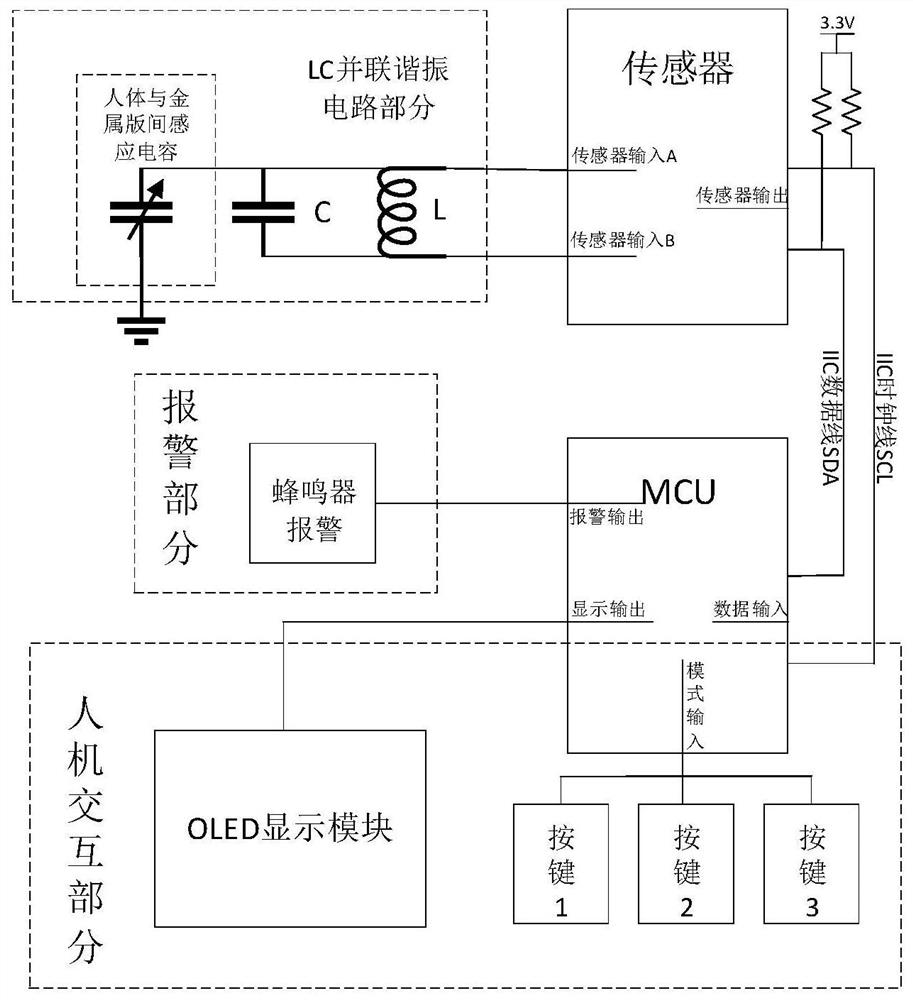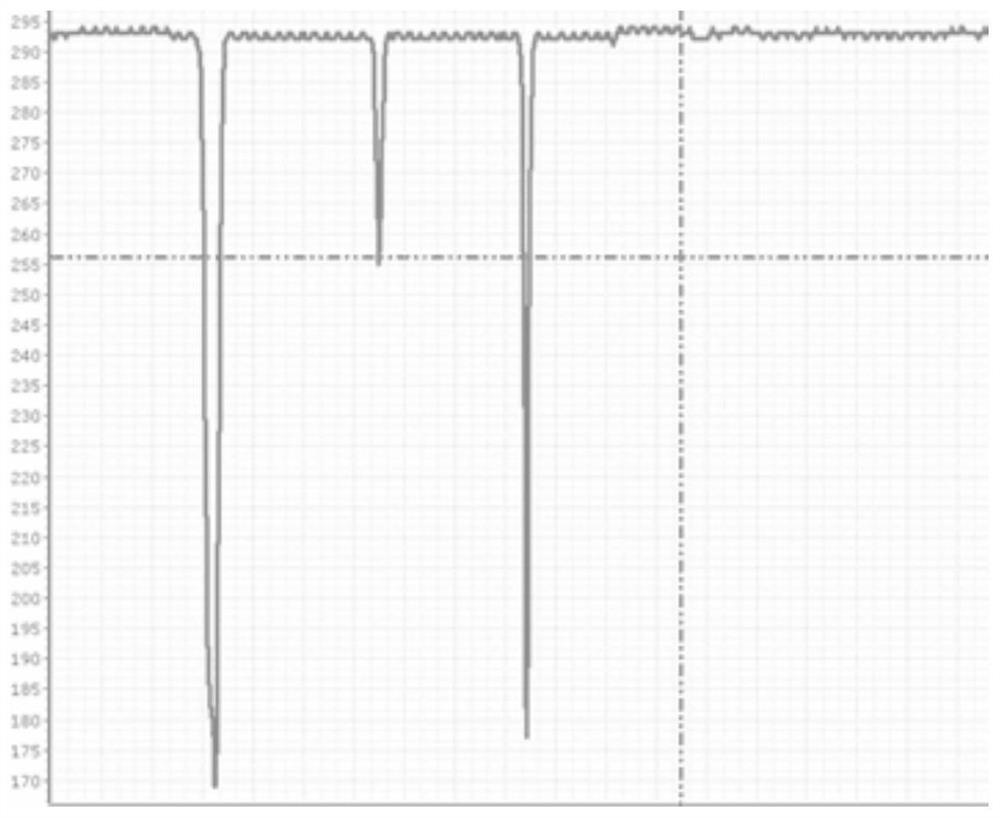Non-contact high-sensitivity alarm, design and application method based on human body capacitive sensing
A non-contact, human body capacitance technology, applied in the direction of electric alarms, etc., can solve the problems of thieves not knowing where the alarms are hidden, the sensor sensitivity is not high enough, the sensor installation is obvious, etc., to achieve poor environmental adaptability and concealment. Good performance and wide detection range
- Summary
- Abstract
- Description
- Claims
- Application Information
AI Technical Summary
Problems solved by technology
Method used
Image
Examples
Embodiment Construction
[0043] Below in conjunction with accompanying drawing and example the present invention will be further described:
[0044] figure 1 It is the circuit diagram of the LC parallel circuit connected with the metal plate. The circuit mainly includes a 10uH inductor and a 33pF capacitor. They are connected in parallel. A metal plate is connected in parallel at both ends of the capacitor and drawn out. Since the human body can be regarded as a charged body, the metal plate and the human body can be connected in parallel. Approximately regarded as a parallel plate capacitor. When the human body is close to the metal plate, the capacitance of the capacitor will change, thereby causing the frequency of the LC parallel resonance to change, and an alarm will be triggered to alarm. The above is the basic principle of the present invention.
[0045] figure 2 It is a system connection block diagram of the present invention. The figure includes five parts: LC parallel resonant circuit p...
PUM
 Login to View More
Login to View More Abstract
Description
Claims
Application Information
 Login to View More
Login to View More - R&D Engineer
- R&D Manager
- IP Professional
- Industry Leading Data Capabilities
- Powerful AI technology
- Patent DNA Extraction
Browse by: Latest US Patents, China's latest patents, Technical Efficacy Thesaurus, Application Domain, Technology Topic, Popular Technical Reports.
© 2024 PatSnap. All rights reserved.Legal|Privacy policy|Modern Slavery Act Transparency Statement|Sitemap|About US| Contact US: help@patsnap.com










